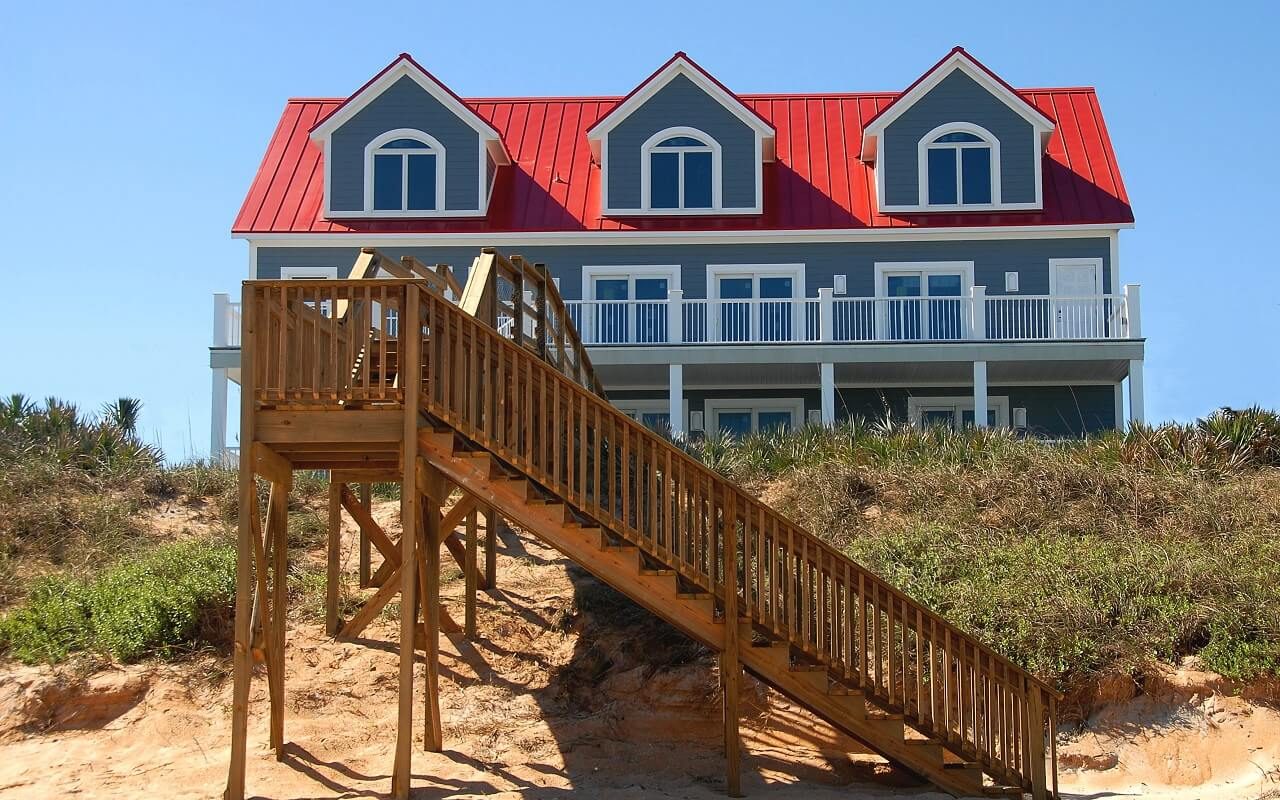Which Types of Decking Materials Are Best For Your Home?
Adding a deck onto your home is a great way to increase your outdoor living space and the value of your home. Let’s look at some of the different types of decking materials that you can choose from.
1. Pressure-Treated Wood
Pressure treated lumber is one of the most popular types of decking material. Most often the wood is pine but can be other types as well. The wood is chemically treated to make it durable enough for an outside deck.
Pros:
- It’s the most affordable options for decking materials.
- Pressure treated lumber is one of the easiest types of decking materials to install. It’s easy to cut and easy to secure with screws or nails.
Cons:
- The wood will deteriorate over time, causing cracks and warping.
- Wood decking may splinter.
- Pressure treated lumber requires maintenance. Pressure washing will keep it clean. The wood will need to be painted or sealed every few years.
2. Cedar and Redwood are Attractive Types of Decking Materials
Cedar and redwood aren’t chemically treated like pressure-treated lumber. The tannins and natural oils in the wood help protect it from the elements. These types of wood are sold by grades, with the center cut of the tree being the highest grade.
Pros:
- The natural beauty of the wood grain makes cedar and redwood aesthetically appealing types of decking materials.
- Cedar and redwood will last longer than pressure-treated wood.
Cons:
- The deck will need to be power washed once a year.
- A fresh coat of sealer will need to be applied every couple of years, depending on where the deck is located.
- The wood decking will need to be stained to keep its color.
3. Composites
Fabricated plastic or composites are also common types of decking materials. They can be manufactured using wood scraps and recycled materials, or constructed entirely out of polyethylene or polyvinyl chloride plastics.
Pros:
- This decking material won’t splinter.
- Easy to maintain: there’s no need to paint, stain, or seal composite decking.
Cons:
- Composites made with wood scraps will decay over time.
- The plastic materials can collect water, causing mold and mildew to grow.
4. Aluminum
If you are looking for a clean-cut looking deck with a bit of an industrial edge, aluminum may be the choice for you. The biggest advantage is that it will practically take care of itself, requiring almost no maintenance on your part.
Pros:
- Aluminum won’t rust, splinter, or crack.
- The finish won’t fade or peel.
- It’s resistant to mold and mildew.
Cons:
- The cost is higher than some other options.
- It can be noisy when people walk on it.
- It can be more slippery when wet than other decking materials.
5. Tropical Hardwoods
If you are looking for unique types of decking materials, tropical hardwoods are strong and durable and could be an ideal choice.
Pros:
- You can select tropical hardwoods from sustainable sources, making it less impactful on the environment.
- Hardwood decking can last up to fifty years.
Cons:
- Tropical hardwoods are the most expensive of these types of decking materials.
- They are difficult to install.
- The hardness of the wood makes it resistant to stains and sealers.
Walton Inspection Services provides home inspection services to Murrells Inlet and the surrounding area. Contact us to schedule our services.

Comments are closed.